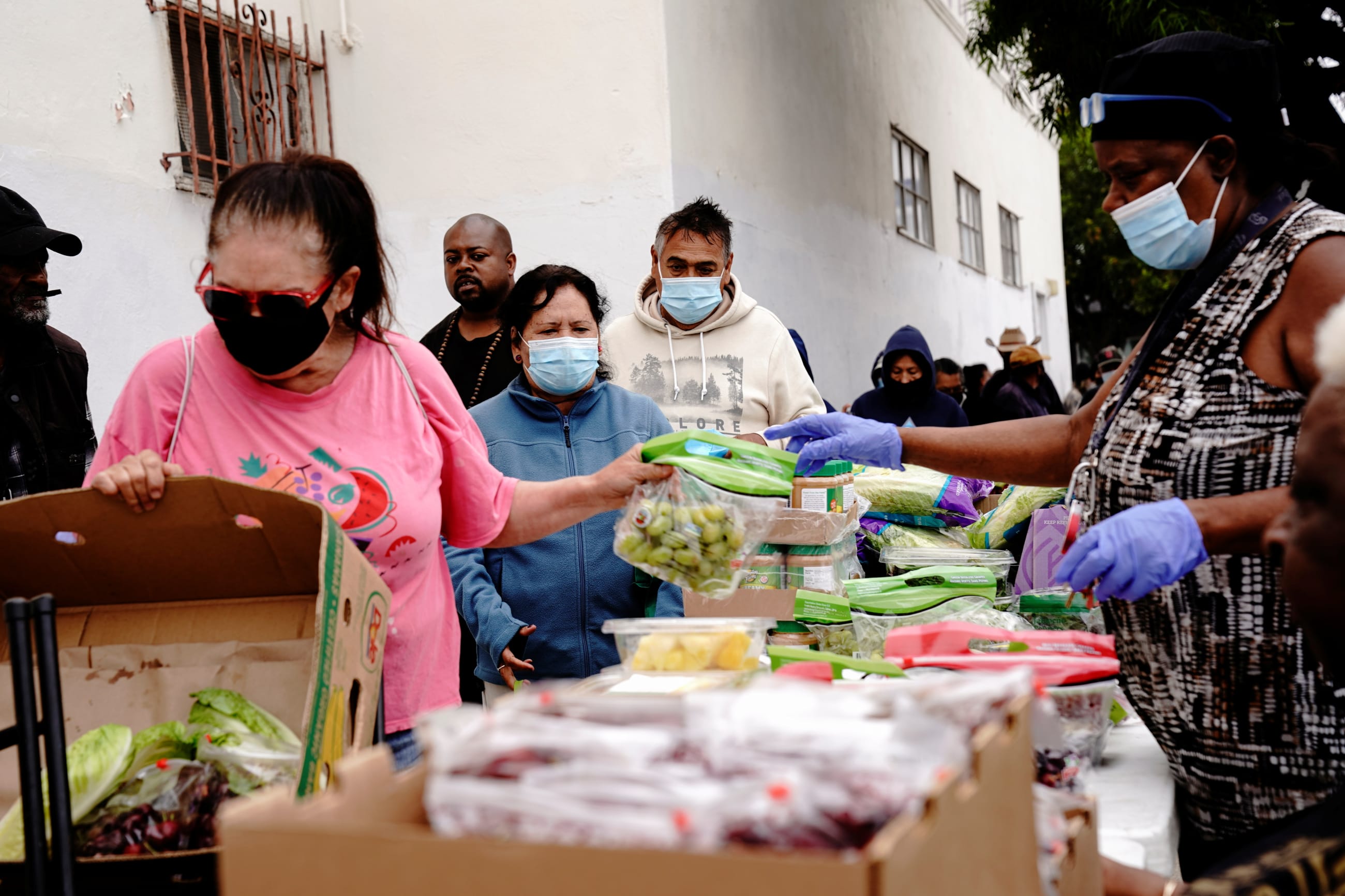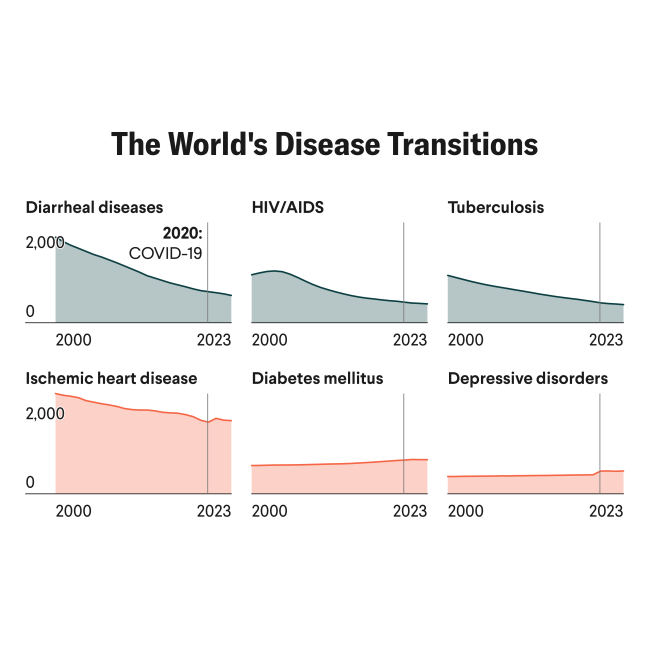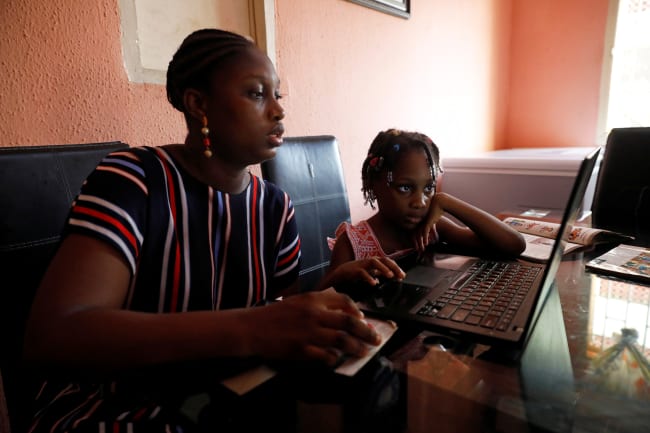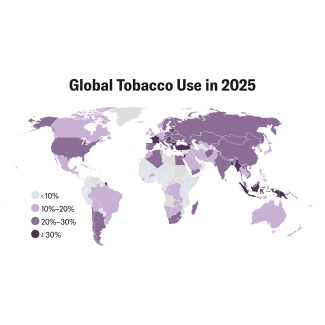This April, the National Institutes of Health (NIH) terminated substantial funding for research on eating disorders (EDs). Cuts to seven NIH eating disorder grants forfeited more than $2.7 million, causing labs such as the University of Louisville's Eating Anxiety Treatment (EAT) Lab to lose money for scientists' salaries and treatment research. Although these funding cuts may seem minor, they represent the broader underprioritization that EDs receive nationwide.
EDs encompass a range of diagnoses, including anorexia, bulimia, binge-eating disorder. These conditions are more common than many realize, affecting nearly 30 million Americans [PDF], some 9% of the U.S. population. EDs are among the deadliest of mental health conditions, linked to osteoporosis, cardiovascular damage, multiple organ failure, and suicide. EDs of all forms are the direct cause of more than 10,200 deaths each year, responsible for one life lost every 52 minutes. Alarmingly, ED prevalence is on the rise. Between 2018 and 2022, health visits for EDs more than doubled for children under the age of 17. Evidence suggests that the COVID-19 pandemic increased adolescents' vulnerability to disordered eating behaviors.
Despite their prevalence and severity, EDs continue to receive paltry funding relative to other major mental health conditions. In 2015, ED research received just $0.73 per affected person, whereas autism and schizophrenia research received $58.65 and $86.97 per person, respectively. A similar pattern appears internationally, countries such as Australia and Canada also allocating minimal funding to ED research.
This chronic underfunding only perpetuates a cycle of inadequate prevention and treatment. Thus the need to position EDs as a critical public health funding priority is urgent.
Burden of Eating Disorders Among Marginalized Communities
EDs affect individuals across racial, gender, and socioeconomic lines, but prevailing cultural assumptions often obscure the experiences of underrepresented groups. In reality, Black, indigenous, and other people of color (BIPOC) account for nearly 25% of Americans living with EDs. These groups frequently face unique social and structural factors that contribute to the onset of these conditions. Stigma, underdiagnosis, and limited access to treatment intensify the burden these communities experience, resulting in disproportionately worse outcomes.
EDs affect individuals across racial, gender, and socioeconomic lines, but prevailing cultural assumptions often obscure the experiences of underrepresented groups
One contributing factor to ED onset among marginalized groups is cultural pressure. For example, Asian American college students face higher rates of caloric restriction than their white counterparts, which research has attributed to perfectionism, societal pressure, and media exposure.
Family expectations may play a role too. In an article to the National Eating Disorder Association, Chinese American Jason Deng wrote that his parents enforced a "hypercompetitive attitude [extending] to not only academics, but also body image." Deng observed that the desire to be perfect only reinforced his desperation to lose weight, fueling cycles of starvation induced by anorexia.
Generational and historical trauma also play a role in ED vulnerability among BIPOC communities. One study suggested that the highest odds of anorexia nervosa diagnosis are observed among American Indian, Alaska Native, and Native Hawaiian (AIANNH) youth. Systemic inequity—such as conflict, housing insecurity, or police brutality—could contribute to ED development as a maladaptive coping mechanism. Trauma and adverse childhood experiences have indeed been strongly associated with ED onset.
These conditions are also heavily influenced by economic hardship. For instance, African American households are disproportionately affected by food insecurity, but fluctuating access to food can trigger patterns of deprivation and overconsumption known as the feast-or-famine cycle. This can explain why Black adults facing food insecurity are more likely to report binge eating than adults generally who are food secure. In general, Black women are more at risk of experiencing binge-eating disorders than non-Hispanic white women.
The availability of diet pills and weight-loss supplements also poses significant threats to marginalized communities. Given the industry's targeting of the Latinx community, Hispanic women report higher rates of past-30-day diet pill use than non-Hispanic white females do. Diet pill users face up to a 258% greater risk of being diagnosed with an ED than nonusers. This is because the use of dietary supplements for weight control can function as a "gateway" to further disordered eating practices, which can dysregulate normal digestion and create dependence on unhealthy coping methods. As of 2025, however, only one U.S. state (New York) has passed legislation restricting the sale of these products. Ultimately, leaving access to dietary supplements on the market will only continue to harm the health of marginalized communities.

Future Directions of Eating Disorder Policy Prioritization
Considering the burden of EDs, it's important to discuss the role of public policy in supporting a healthier future.
First, every cultural group should be guaranteed equitable access to treatment. One study confirmed that Asian Americans with EDs had the lowest rates of seeking help given a shortage of clinics and culturally sensitive care. Brandon Ito, assistant clinical professor of psychiatry at UCLA, suggests ensuring that more "clinics [are] built in Asian communities and run with cultural competence." But among these groups, it's imperative that the quality of care is improved as well.
This can be achieved by increasing workforce diversity. Universities should focus on recruiting a more diverse range of ED practitioners, especially given that just 5% of providers are BIPOC and LGBTQ+. Training pathways should be supported with funding for greater specialization, conference participation, and clinical research opportunities. The number of bilingual health providers should also be increased notably given that nearly one-third of Asian Americans do not consider themselves fluent in English. Subsequently, more clinicians should be trained to recognize non-Eurocentric eating patterns so they can better identify ED symptoms among nonwhite patients [PDF]. Improving the cultural diversity of the ED workforce can actually encourage more individuals from underrepresented groups to seek ED treatment.
Another way to advance equity in ED treatment for BIPOC communities is to reform insurance coverage. Currently, around 58% of individuals with public insurance cannot access qualified ED providers. However, AIANNH and Black adults have the highest rates of public insurance coverage [PDF]. Given that BIPOC groups are less able to get treated for an ED, insurance should be restructured to enable accessible ED treatment.
To support equitable insurance, policies need to reflect the economic gaps underlying ED development, such as food insecurity. Strengthening nutrition programs such as the Supplemental Nutrition Assistance Program (SNAP) can help BIPOC communities attain consistent access to nutrient-rich food, reducing the likelihood of the feast-or-famine cycle causing negative relationships with meals. Furthermore, to address diet pill-related disparities in ED development, more states should take New York's approach and implement legislation to restrict the sale of over-the-counter dietary supplements to minors.
Despite the substantial burden of EDs among American communities, these conditions remain sidelined in research, policy, and insurance. If decisive policy action is not taken, the number of affected individuals will continue to rise, deepening preventable morbidity and mortality nationwide.
We need to confront the neglect preventing EDs from being recognized as a national priority. Regardless of where that starts—expanding research, increasing diversity, or enacting reform—any action will move the country in the right direction. The ability to address this crisis truly hinges on acknowledging EDs as multidimensional conditions. When that occurs, society can finally start prioritizing ample support for those long overlooked.
Thus, the question is not whether we can create a more equitable future, but whether we will choose to do so.













